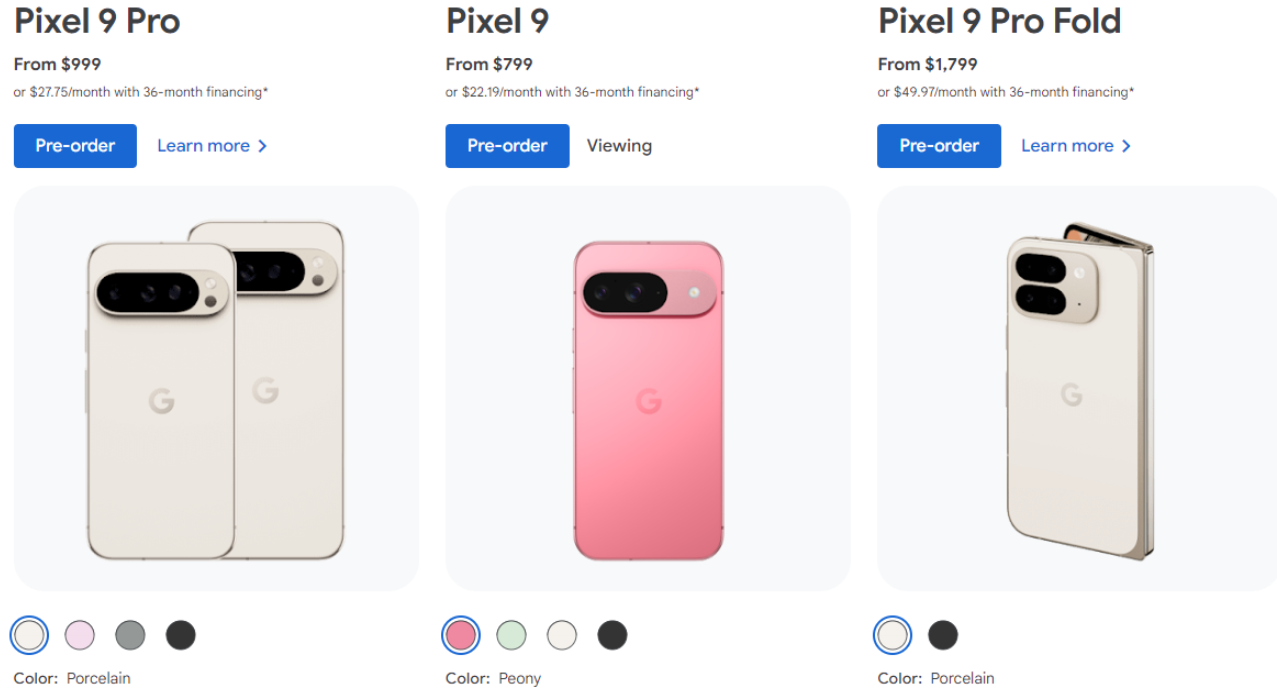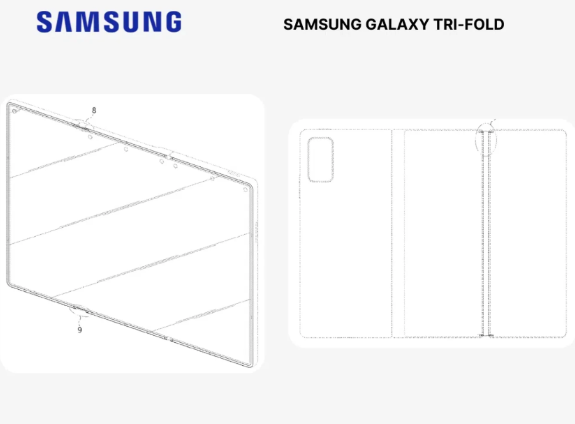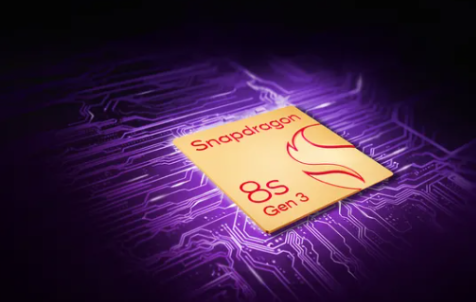Our smartphone year-in-review report recaps smartphone launches, placements, pricing and advertising and promotional activity captured throughout 2024. The report features data and insights from OpenBrand’s Smartphone categories, which feature products sold through the US ecommerce and brick-and-mortar channels.
Read through all the 2024 pricing and promotions insights below or email the report to read later.
- Flagship Launches
- Foldables Take Center Stage
- Sustainability & Longevity
- Chipset Wars & Performance Upgrades
- Affordable Innovation
- Global Challenges & Geopolitical Impact
- The Rise of AI-Driven Experiences
- Looking Ahead
Summary
As the year wraps up, the smartphone market has once again seen steady advancements and shifts in priorities. Key flagship releases included Samsung’s Galaxy S24 series, which focused on enhancing AI performance and photography, and Apple’s iPhone 16 lineup, which introduced incremental improvements like a 6x optical zoom in the Pro Max model. Google’s Pixel 9 series emphasized AI-driven features like advanced photo editing, while Xiaomi’s 14 Ultra offered strong competition in mobile photography with its advanced camera hardware.
Each of these flagship models continued to refine established designs and features, signaling a year of steady evolution rather than dramatic change. Brands remained focused on delivering high-quality experiences while finding ways to differentiate in an increasingly competitive landscape.
Flagship Launches: Refinements and Competitive Edge
Samsung continued to lead the flagship market with its Galaxy S24 series, emphasizing improved AI capabilities and computational photography. The Galaxy S24 Ultra, powered by the Snapdragon 8 Gen 3 globally, delivered professional-grade photography and smarter performance, solidifying Samsung’s dominance. Similarly, Apple’s iPhone 16 lineup focused on incremental upgrades, with the Pro Max introducing a 6x optical zoom periscope lens, enhancing its photographic capabilities.
Google made waves with the Pixel 9 series, furthering its AI leadership through its Tensor G3 chip. Features like advanced real-time photo editing and unique computational photography tools like Magic Eraser demonstrated Google's focus on AI as the foundation of its user experience. Meanwhile, Xiaomi’s 14 Ultra set new standards in mobile photography with a 1-inch sensor and superior low-light capabilities, challenging competitors in the premium segment.

Foldables Take Center Stage
The foldable smartphone market expanded significantly in 2024, with Samsung continuing to lead the segment. The Galaxy Z Fold 6 and Z Flip 6 brought thinner bezels, improved durability, and better battery life, reinforcing Samsung’s position. Meanwhile, affordable foldable models like Samsung's Galaxy Z Flip FE, Motorola's Razr 50 Lite, and Honor's Magic V Lite made the technology accessible to a wider audience, accelerating adoption.
Google entered the foldable space with the Pixel Fold, leveraging its software expertise to deliver a polished user experience. The growing competition in foldables signaled the category's transition from niche to mainstream, with innovation driving consumer interest.
As the race for maintaining the crown on the ever improving and evolving foldable technology continues, there have been rumors that we will see some trifoldable options or even rollables available in the US from Samsung.

Sustainability & Longevity
Sustainability emerged as a critical theme in 2024, with brands like Fairphone leading the charge. The Fairphone 5 exemplified this shift, offering modular, repairable designs and eco-friendly materials. Major brands, including Samsung, Google, and Xiaomi, committed to extended software support, with promises of four to five years of updates, aligning with consumer demands for durability and reducing e-waste.
Chipset Wars & Performance Upgrades
The year saw fierce competition in the chipset space, with Qualcomm’s Snapdragon 8 Gen 3 and Snapdragon 8 Elite and MediaTek’s Dimensity 9300 and 9400 setting new benchmarks for performance and efficiency. These processors enabled advanced AI features, including real-time photo editing and high-fidelity gaming, elevating the user experience in flagship devices. The growing demand for cutting-edge processing power underscored the importance of hardware innovation in maintaining competitive advantage.

Affordable Innovation
2024 was a pivotal year for making premium features more accessible. Devices like Google’s Pixel 9a and Samsung’s Galaxy Z Flip FE brought high-end specs, including advanced cameras and foldable displays, to more affordable price points. These devices catered to budget-conscious consumers while maintaining quality, expanding market reach for manufacturers.
Global Challenges & Geopolitical Impact
The smartphone market navigated complex global challenges, including inflation, fluctuating currency values, and geopolitical tensions. Chinese manufacturers like Huawei faced continued trade restrictions but showcased resilience with innovative launches like the Mate 60 Pro, featuring a proprietary 7nm Kirin chip. Rising costs of components, such as Qualcomm’s Snapdragon 8 Elite, forced brands to rethink pricing strategies, impacting affordability in some regions.
The Rise of AI-Driven Experiences
Artificial intelligence played a transformative role in smartphones this year, with manufacturers integrating AI into every aspect of the user experience. From Google’s contextual photo editing to Samsung’s enhanced portrait deblurring, AI-driven features became essential differentiators. The growing reliance on AI underscored its importance as a key driver of innovation across the industry.
Looking Ahead
Flagship launches, foldable adoption, and AI innovation defined the landscape, while sustainability and affordability gained traction as pivotal trends. With 2025 on the horizon, the industry is poised for further breakthroughs and continued evolution in response to consumer needs and global challenges. As the smartphone market concludes another year, looking forward to 2025 begs the question of will longer contract lengths and increasing price points on smartphones continue to slow consumers’ upgrades, or if the upcoming year will spark enough innovation to draw consumers in for the latest must have smartphones.
Get more information
About the Author
Nick Harpster
Nick Harpster is a Consumer Electronics Analyst at OpenBrand, specializing in Tablets & Detachables, Smartphones, and Monitors. With over five years of experience in analytics, Nick excels at transforming complex data into actionable insights, empowering clients to make informed decisions in a dynamic market.
Related blogs
Unlock the Power of Real-Time Data & AI in Retail Success: White Paper
Have your data — and use it too. Accessing data in retail is one thing. Knowing what to do with it is another. Market data is not meant to…
Related blogs
Consumer Price Index: Durable and Personal Goods | March 2025
This April 2025 edition of the OpenBrand CPI offers insights into March price movements and trends…
What the Kitchen Market Needs to Know About Appliance Tariffs, Pricing & More
As we move into Q2 2025, the kitchen appliance industry is facing a period of noteworthy…
Consumer Price Index: Durable and Personal Goods | February 2025
This March 2025 edition of the OpenBrand CPI offers insights into February price movements and…
Home Depot vs. Lowe’s Earnings Call Reviews: Q4 2024 Market Intelligence
Earnings reports provide a valuable snapshot of a retailer’s financial performance, offering…





